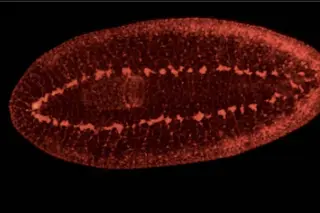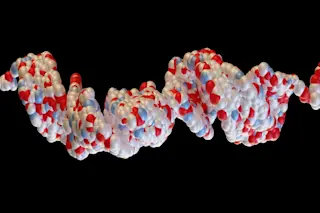For the tiny flatworm, regeneration of missing body parts is a piece of cake. Someone chopped its head off? No problem! It grows a brand new one in about seven days, complete with a spanking new brain with all the right circuits and connections. (As for the chopped-off head, it just grows a new body.) This amazing ability of the flatworm to regrow a missing head and to produce a brain on demand has now been traced back to a key gene, researchers report in a PloS Geneticsstudy. The identification of the gene is exciting news for scientists who wonder if humans, too, can one day learn to regenerate missing body parts. The Register reports that the discovery of the "smed-prep" gene unlocks the mechanisms by which the hard-to-kill Planarian flatworms grow new muscle, gut, and brain cells:
Even more importantly, it seems that the information contained in smed-prep also ...














